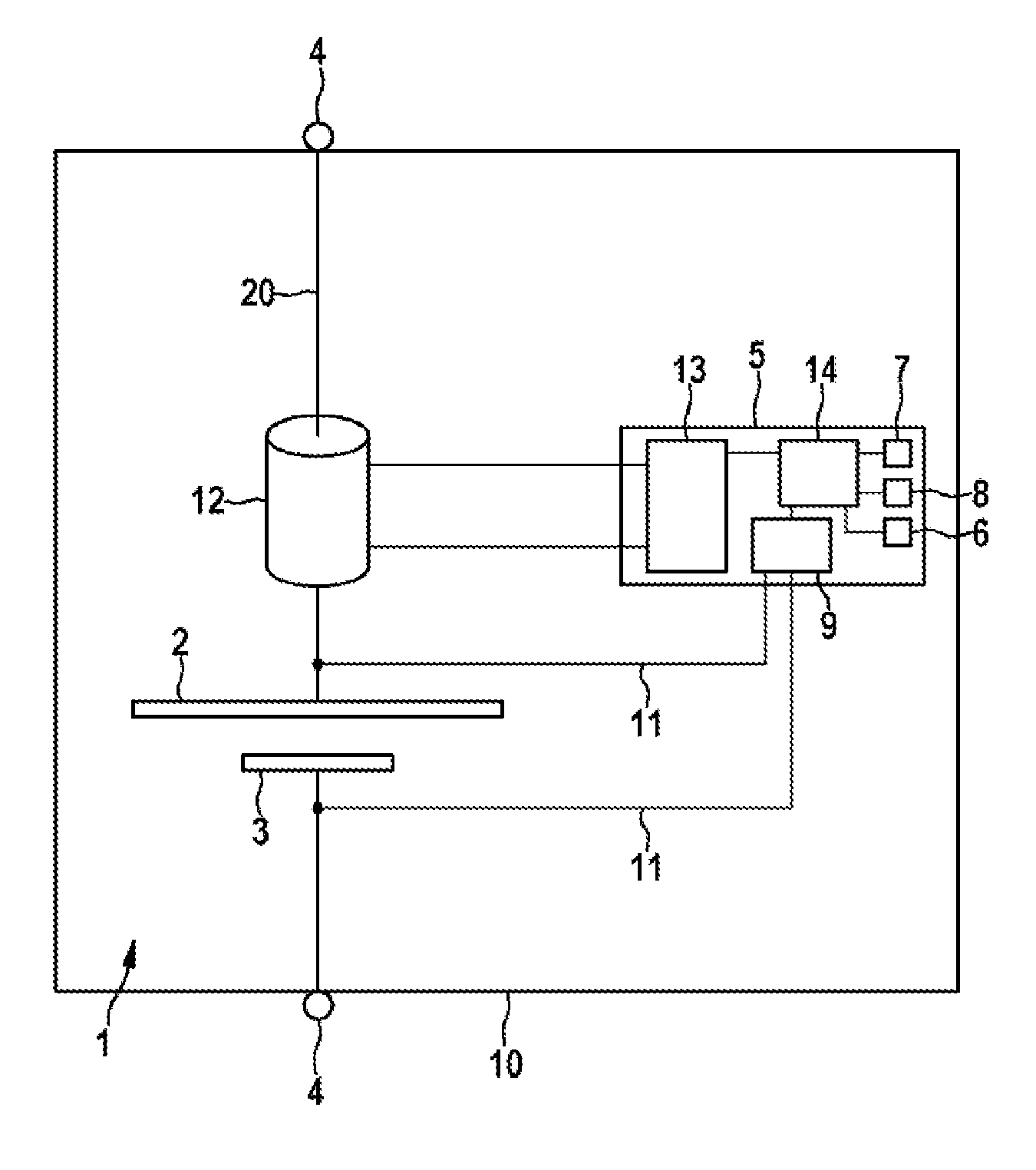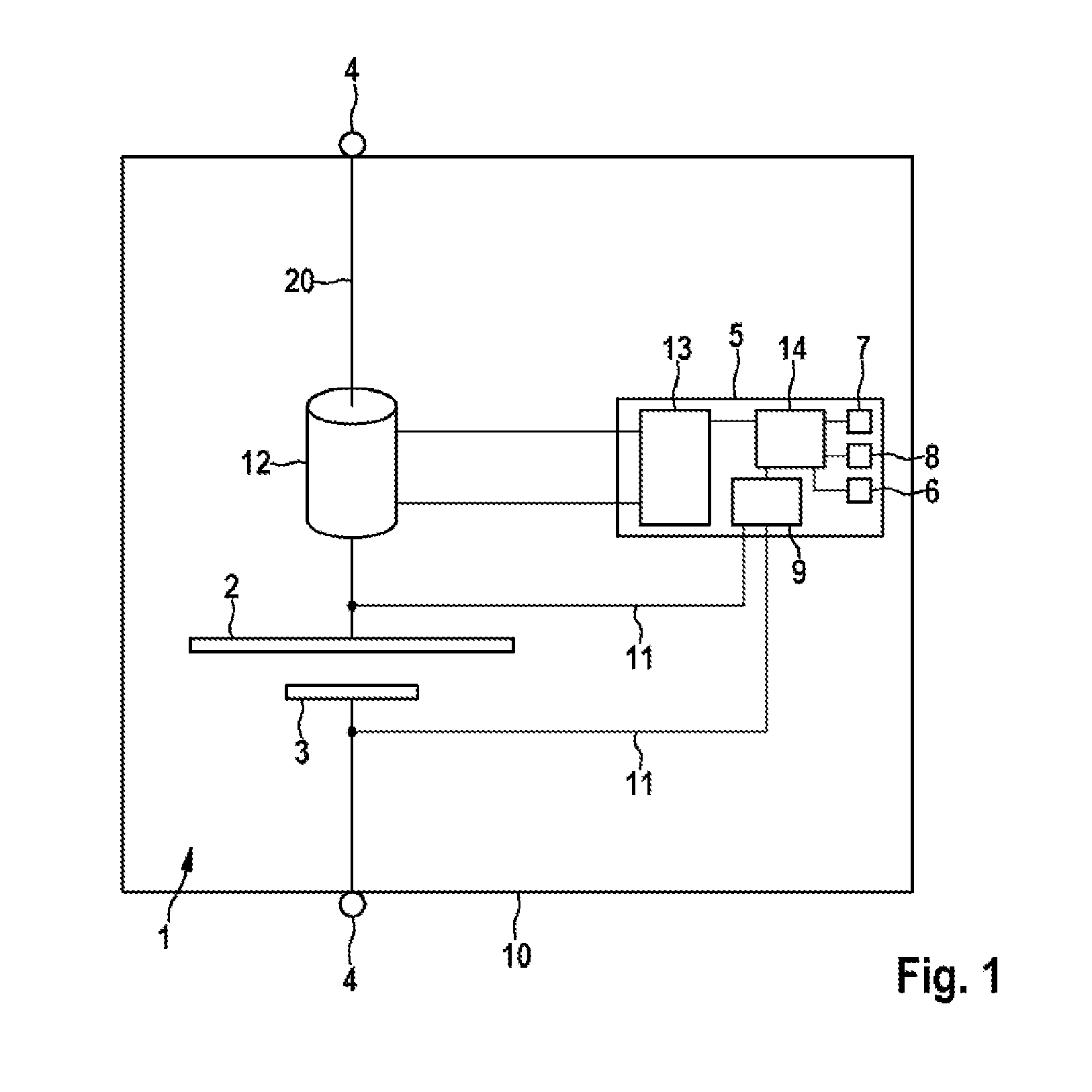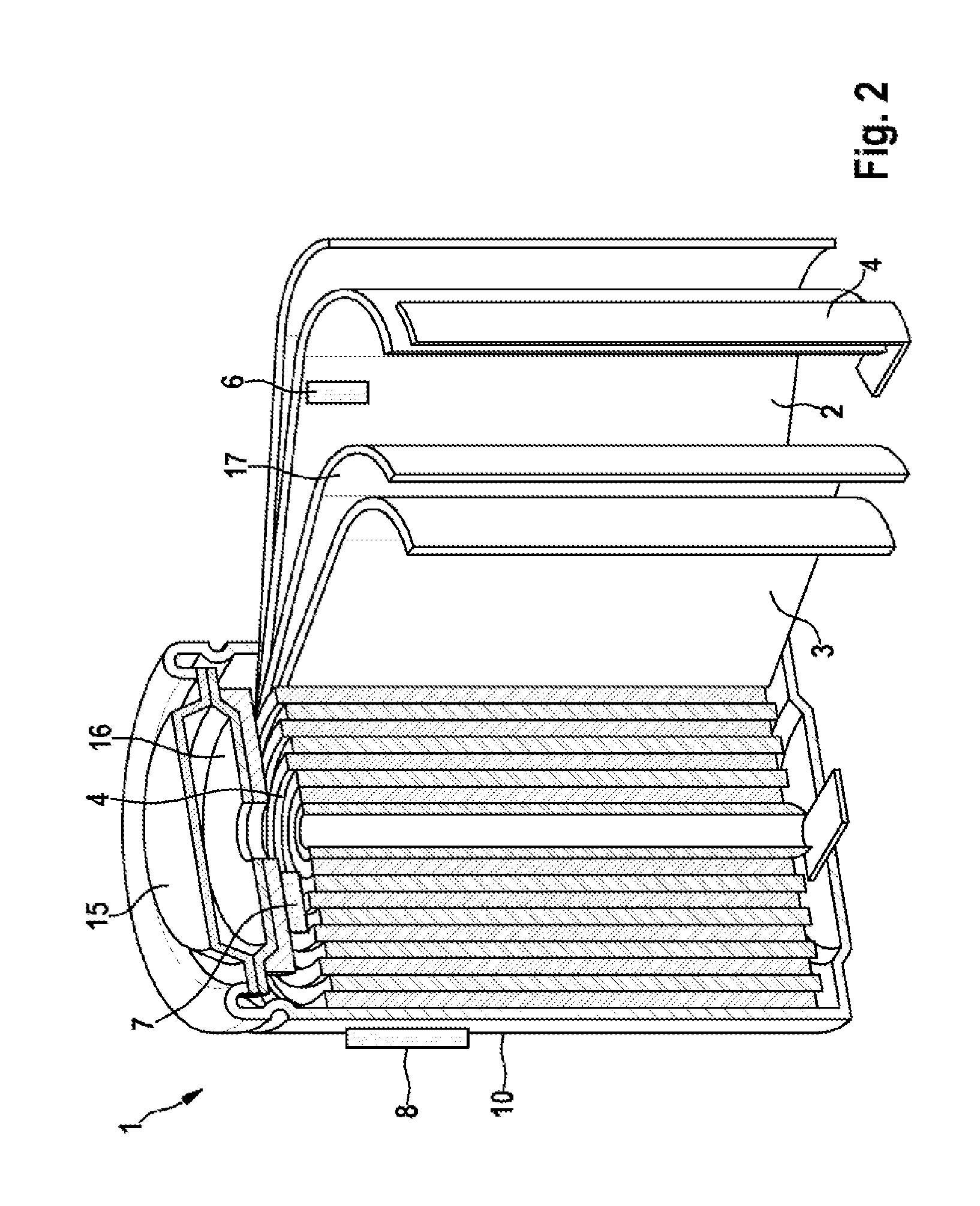Battery cell comprising a device for monitoring at least one parameter of the battery cell
a battery cell and at least one parameter technology, applied in the field of batteries, can solve the problems of battery cell thermal runaway, battery cell damage, battery cell even at risk, etc., and achieve the effects of improving the monitoring of individual battery cell parameters, improving or simplifying the power supply to monitor the parameters of sensors
- Summary
- Abstract
- Description
- Claims
- Application Information
AI Technical Summary
Benefits of technology
Problems solved by technology
Method used
Image
Examples
Embodiment Construction
[0023]FIG. 1 illustrates a block circuit diagram of a battery cell 1 with a positive electrode 2 and a negative electrode 3. The battery cell 1 is surrounded by a pressure-tight battery cell housing 10. Connections 4 are electrically conductively connected to the electrodes 2 and 3 of the battery cell 1 in order to make electrical contact with the battery cell 1. The battery cell 1 has a device 5 for monitoring at least one parameter of the battery cell 1, wherein the device 5 comprises a plurality of sensors 6, 7, 8, 9. In the present case, the device 5 is completely arranged within the battery housing 10 and is thus completely integrated within the battery cell 1. In the present case, the battery cell 1 is a wound battery cell with a cell winding (not explicitly illustrated in FIG. 1). The device 5 is designed as a microsystem component which consists of a chemically resistant semiconductor material, for example of silicon carbide. The device 5 comprises a chemical sensor 6 which ...
PUM
 Login to View More
Login to View More Abstract
Description
Claims
Application Information
 Login to View More
Login to View More - R&D
- Intellectual Property
- Life Sciences
- Materials
- Tech Scout
- Unparalleled Data Quality
- Higher Quality Content
- 60% Fewer Hallucinations
Browse by: Latest US Patents, China's latest patents, Technical Efficacy Thesaurus, Application Domain, Technology Topic, Popular Technical Reports.
© 2025 PatSnap. All rights reserved.Legal|Privacy policy|Modern Slavery Act Transparency Statement|Sitemap|About US| Contact US: help@patsnap.com



